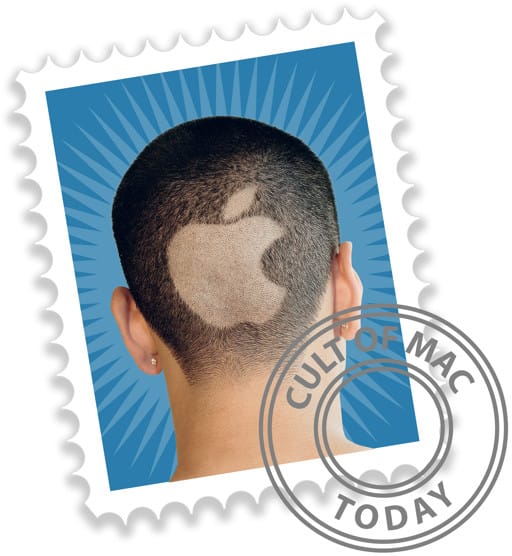 May 6, 1998: Apple CEO Steve Jobs unveils the original iMac, a brightly colored, translucent computer that will help save the company. Coming just 10 months after Jobs’ new management team takes over, the iMac G3 loudly announces that the days of Apple quietly fading into the background are over.
May 6, 1998: Apple CEO Steve Jobs unveils the original iMac, a brightly colored, translucent computer that will help save the company. Coming just 10 months after Jobs’ new management team takes over, the iMac G3 loudly announces that the days of Apple quietly fading into the background are over.
The colorful computer marks the start of a very successful run for Cupertino.
Original iMac launch: A computer from a good planet
When Apple unveiled the original iMac on this day in 1998, it didn’t just introduce a new computer. It signaled the resurrection of a company on the brink. The iMac was more than a machine. It was a manifesto. It tore up the beige box playbook and rewrote the rules for consumer tech. The iMac revived Apple’s fortunes and also re-established the company’s identity as the most design-forward company in Silicon Valley. With its consumer-friendly features and a playful look, the iMac set the stage for the iPod, the iPhone and Apple’s trillion-dollar future.
“iMac comes from the marriage of the excitement of the internet with the simplicity of Macintosh,” Steve Jobs said from the stage at De Anza College’s Flint Center for the Performing Arts in Cupertino, California. “Even though this is a full-blooded Macintosh, we are targeting this for the No. 1 use that consumers tell us they want a computer for, which is to get on the internet — simply and fast.”
Today, it’s difficult to overstate just how different that first iMac (ultimately branded as the iMac G3) looked when compared to other computers at the time. Next to the gray or beige boxes built by rivals, it really stood out.
“It looks like it’s from another planet,” Jobs said. “And a good planet. A planet with better designers.”
The designer responsible for the iMac was Jony Ive, then just 31 years old. Ive had been at Apple for several years before Jobs’ return in 1997, and was on the verge of quitting. Instead, he found so much in common with Jobs that his planned resignation turned into the pair developing a breakthrough new machine.
iMac G3: The world’s most accessible computer
The iMac G3 was very much an update of the philosophy that drove the original Macintosh in 1984. At the time, Apple’s most affordable computer cost $2,000, almost twice what a typical Windows PC ran. Jobs initially wanted something stripped-down and affordable, through which users could access the internet.
However, just as happened with the original Mac, the iMac project became more ambitious and morphed into a statement computer. With its translucent sea-blue design (named Bondi Blue after the water at an Australian beach), the iMac G3 looked accessible and easy to use.
Not everyone liked it, though. Some people thought it looked too toylike, especially with its terrible “hockey puck” mouse. But everyone acknowledged its distinctiveness.

Photo: Apple
iMac G3 specs: A smash hit for Apple
In terms of specs, the iMac G3 boasted a 233 MHz PowerPC 750 (G3) processor, 32MB of RAM, a 4GB EIDE hard drive, and a choice of either ATI Rage IIc graphics with 2MB of VRAM or ATI Rage Pro Turbo graphics with 6MB of VRAM.
Two other pieces of iMac G3 hardware also merit a mention. The machine came with a built-in telephone modem at a time when most computers included these only as optional extras.
It also, notably, didn’t come with a floppy disk drive at a time when this was standard. Like Apple’s elimination of the 3.5mm headphone jack from the iPhone years later, this caused an uproar — until everyone realized Cupertino made the right call.
The iMac went on sale in August 1998 a few months after Jobs unveiled it. By then, the all-in-one computer had racked up 150,000 preorders. The high level of interest drove Apple’s stock price to more than $40. This marked its highest point in three years.
The iMac G3 kicked off a new Apple era
The iMac’s colorful design later made its way to the iBook laptop, which also proved immensely popular. In addition, Apple released a series of iMac G3 models in alternative colors, including oddball patterns like Flower Power and Blue Dalmatian.
Apple moved away from the ultra-colorful look a couple of years later, beginning with the distinctive white iPod. For years, the look most associated with the modern iMac was a single thin slab of aluminum.
Then, in 2021, Apple launched the first iMac powered by the company’s speedy (and proprietary) M1 chip. Aside from a giant performance boost from the Apple silicon processor, the first M1 iMacs also ushered in a top-to-bottom redesign. And they came in seven different colors — a throwback to when the Bondi Blue iMac G3 was the coolest computer around.
Did you own an iMac G3? What did you think of it when you first saw it? Let us know in the comments below.


